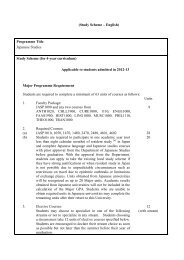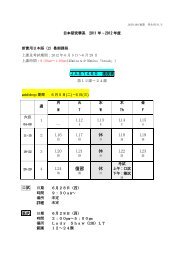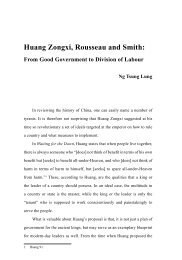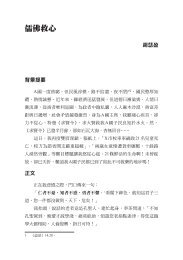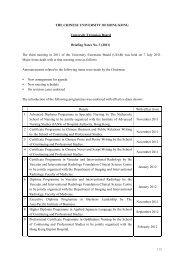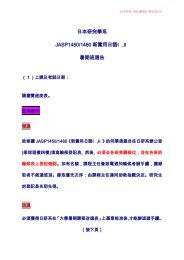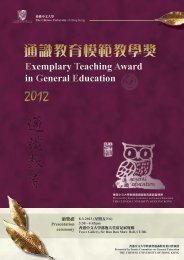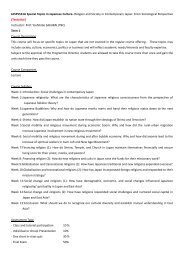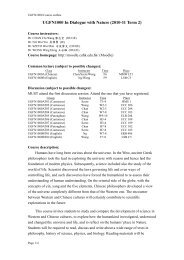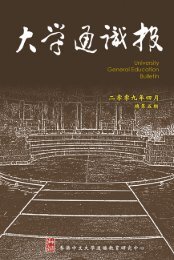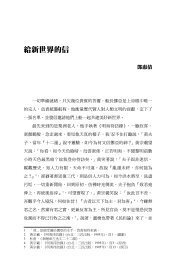ä¸è¼å ¨æ¸ - The Chinese University of Hong Kong
ä¸è¼å ¨æ¸ - The Chinese University of Hong Kong
ä¸è¼å ¨æ¸ - The Chinese University of Hong Kong
Create successful ePaper yourself
Turn your PDF publications into a flip-book with our unique Google optimized e-Paper software.
Susan Gano-Phillips, Affective Learning in General Education 23<br />
outcome focused on an attitude), peers (e.g., an attitudinal outcome that affects<br />
group functioning/performance such as teamwork or the willingness to engage<br />
in collaborations), or even instructors, supervisors, or employers (e.g., an<br />
outcome focused on a broad concept like open-mindedness, valuing life-long<br />
learning or displaying a commitment to ethical behavior). Likewise, there are<br />
a variety <strong>of</strong> methods for indirectly assessing affective ILOs. Some <strong>of</strong> the most<br />
common assessments include self-reflective writing, self-report questionnaires,<br />
and surveys completed by others. Each is described briefly below.<br />
Self-reflective writing (Journaling). Reflection refers to “the intentional<br />
consideration <strong>of</strong> an experience in light <strong>of</strong> particular learning objectives”<br />
(Hatcher & Bringle, 1997, p. 153). Many faculty who explicitly state<br />
affective ILOs use reflective journaling as a method <strong>of</strong> assessing their<br />
students’ achievement <strong>of</strong> those outcomes. When students reflect on their<br />
thoughts and feelings, they have a chance to share information about their<br />
internal states and attitudes. Students’ journals provide a window into their<br />
attitudes and beliefs. Faculty who require students to submit journals are not<br />
telling students what or how to feel, only that thinking and feeling are both<br />
important. Both reason and emotion are essential components <strong>of</strong> the reflective<br />
learning process (Felton, Gilchrist, & Darby, 2006). Effective reflection is<br />
characterized by a linking <strong>of</strong> experiential learning to course material. Further,<br />
the greatest likelihood <strong>of</strong> achieving the affective ILOs come from reflection<br />
that is guided by the instructor, occurs regularly over time rather than only<br />
once or twice, explicitly encourages the exploration <strong>of</strong> values, and permits<br />
feedback from the instructor (Felton et al., 2006).<br />
Faculty can encourage students to integrate emotion and attitudes into<br />
their analytic reflections by providing prompts for journaling activities<br />
(see Campus Compact National Office, 2001, for guidance on structuring



